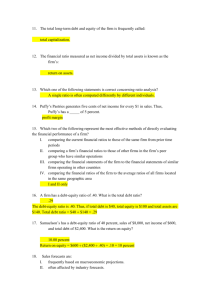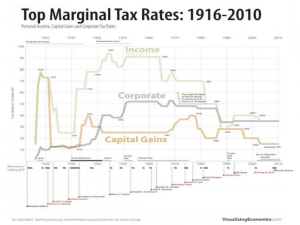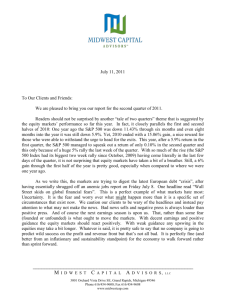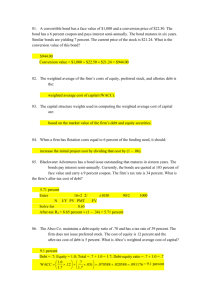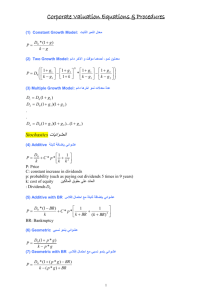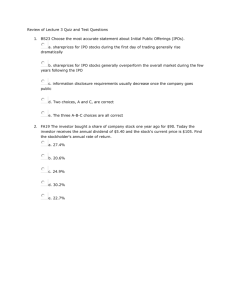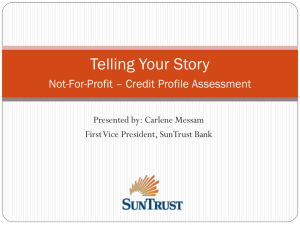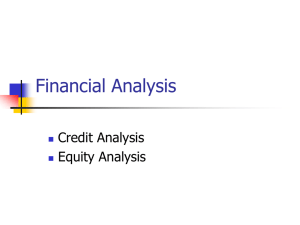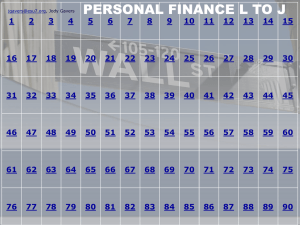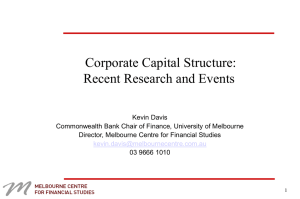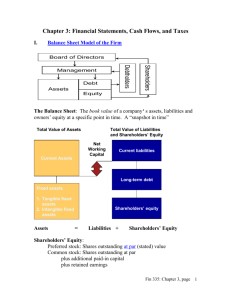P&G Financial Analysis: Debt, Equity, and Ratios
advertisement
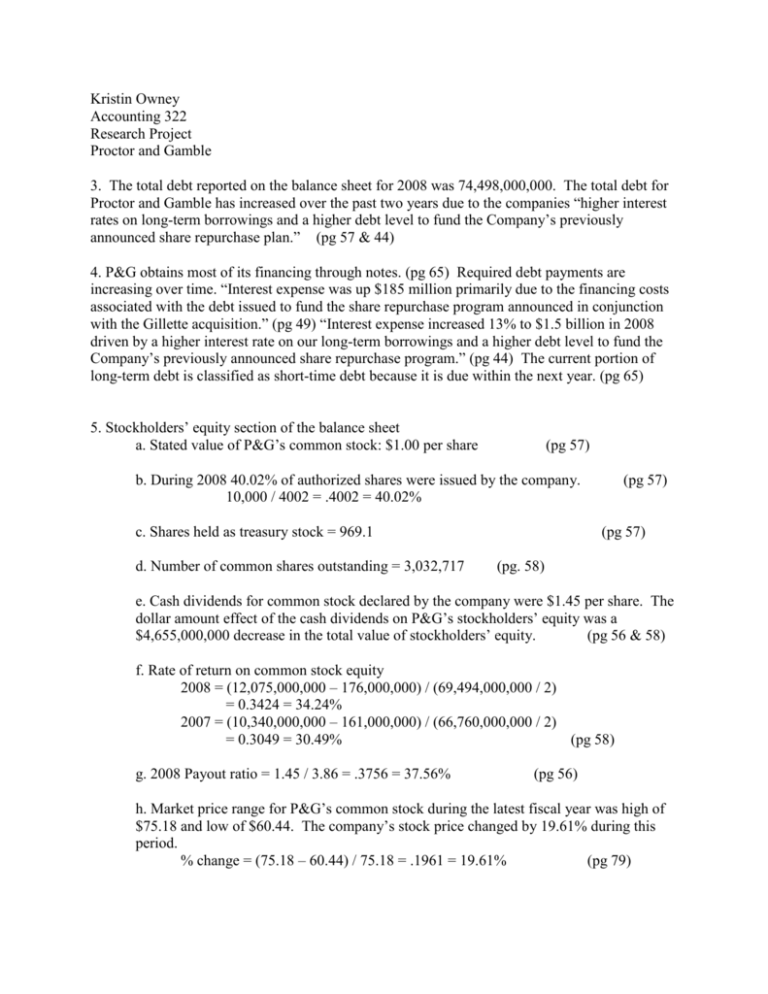
Kristin Owney Accounting 322 Research Project Proctor and Gamble 3. The total debt reported on the balance sheet for 2008 was 74,498,000,000. The total debt for Proctor and Gamble has increased over the past two years due to the companies “higher interest rates on long-term borrowings and a higher debt level to fund the Company’s previously announced share repurchase plan.” (pg 57 & 44) 4. P&G obtains most of its financing through notes. (pg 65) Required debt payments are increasing over time. “Interest expense was up $185 million primarily due to the financing costs associated with the debt issued to fund the share repurchase program announced in conjunction with the Gillette acquisition.” (pg 49) “Interest expense increased 13% to $1.5 billion in 2008 driven by a higher interest rate on our long-term borrowings and a higher debt level to fund the Company’s previously announced share repurchase program.” (pg 44) The current portion of long-term debt is classified as short-time debt because it is due within the next year. (pg 65) 5. Stockholders’ equity section of the balance sheet a. Stated value of P&G’s common stock: $1.00 per share (pg 57) b. During 2008 40.02% of authorized shares were issued by the company. 10,000 / 4002 = .4002 = 40.02% c. Shares held as treasury stock = 969.1 d. Number of common shares outstanding = 3,032,717 (pg 57) (pg 57) (pg. 58) e. Cash dividends for common stock declared by the company were $1.45 per share. The dollar amount effect of the cash dividends on P&G’s stockholders’ equity was a $4,655,000,000 decrease in the total value of stockholders’ equity. (pg 56 & 58) f. Rate of return on common stock equity 2008 = (12,075,000,000 – 176,000,000) / (69,494,000,000 / 2) = 0.3424 = 34.24% 2007 = (10,340,000,000 – 161,000,000) / (66,760,000,000 / 2) = 0.3049 = 30.49% (pg 58) g. 2008 Payout ratio = 1.45 / 3.86 = .3756 = 37.56% (pg 56) h. Market price range for P&G’s common stock during the latest fiscal year was high of $75.18 and low of $60.44. The company’s stock price changed by 19.61% during this period. % change = (75.18 – 60.44) / 75.18 = .1961 = 19.61% (pg 79) 6. The debt to equity ratio for the most recent two years are: 2007- 71,254,000,000 / 66,760,000,000 = 1.067 2008- 74,498,000,000 / 69,494,000,000 = 1.072 (pg 57) The proportion of debt financing to equity financing for P&G has changed an insignificant amount throughout the past two fiscal years. 7. Short-term liquidity Current ratio = 24,515,000,000 / 30,958,000,000 = .7919 (pg. 57) Quick ratio = (3,313,000,000+228,000,000+6,761,000,000)/30,958,000,000=.3328 (p57) Based on the current ratio if P&G had to pay back all its short term liabilities with its short term assets at this point it would not be able to do so. However, the current ratio is rather high, which means that there short term liquidity is stronger. According to the quick ratio P&G is not in a good position to pay short term obligations using its most liquid assets. Using ratios to analyze P&G’s short term liquidity proves that the company is not extremely liquid. Since the quick ratio is more conservative it shows that the current ratio may be substantially overestimating the liquidity of the company. “Our primary source of liquidity is cash generated from operations. We believe internally generated cash flows adequately support business operations, capital expenditures and shareholder dividends, as well as a level of other discretionary cash uses. We are able to supplement our liquidity needs, as required, with broad access to financing in capital markets and four bank credit facilities.” (pg 50) Based on the notes to the financial statements P&G’s high credit rating makes them confident that if needed liquidity would not be a problem. Long-term solvency Total debt to total assets ratio = 74,498,000,000 / 143,992,000,000 = .5174 Times interest earned = 17,083,000,000 / 1,467,000,000 = 11.64 (pg 57) (pg. 56) Analyzing total debt to total assets ratio supports that the company finances about 50% of its assets by debt. This is good for long-term solvency because P&G has not financed with so much debt that it is financially risky, it is extremely unlikely that P&G won’t be able to pay long term fixed expenses. Long term solvency is strong based on the times interest earned ratio, since P&G could cover its interest charges about 12 times over. This means P&G has a good balance between earnings and debt, while still funding additional projects to receive a higher rate of return then simply paying debt off. 8. Stockholders’ equity Rate of return on common stock equity = (12,075,000,000 – 176,000,000) / (69,494,000,000 / 2) = .3424 = 34.24% (pg 58) Payout ratio = 1.45 / 3.86 = .3756 (pg 56) Book Value Per Share = 4,002,000,000 / 3,032,717 = 1,319.51 (pg. 58) According to the above ratios during 2008 stockholders’ equity increased. This is supported by the 34% return on common stock equity, which means that P&G earned its stockholders a 34% return on their investment. Since P&G was able to pay dividends at a payout ratio of .3756 stockholders’ equity must have been strong. With a reasonable amount of earnings being returned to the investor, in dividends, and the rest retained it is likely that P&G will be able to support its dividend payments in future years. According to the financial statements stockholders’ equity has increased from 2007 to 2008, with more common shares and convertible class A preferred stock issued. Even with the repurchase cost of treasury stock during 2008 retained earnings and total shareholders’ equity increased. (pg 57)
